#Hieizan
Explore tagged Tumblr posts
Text
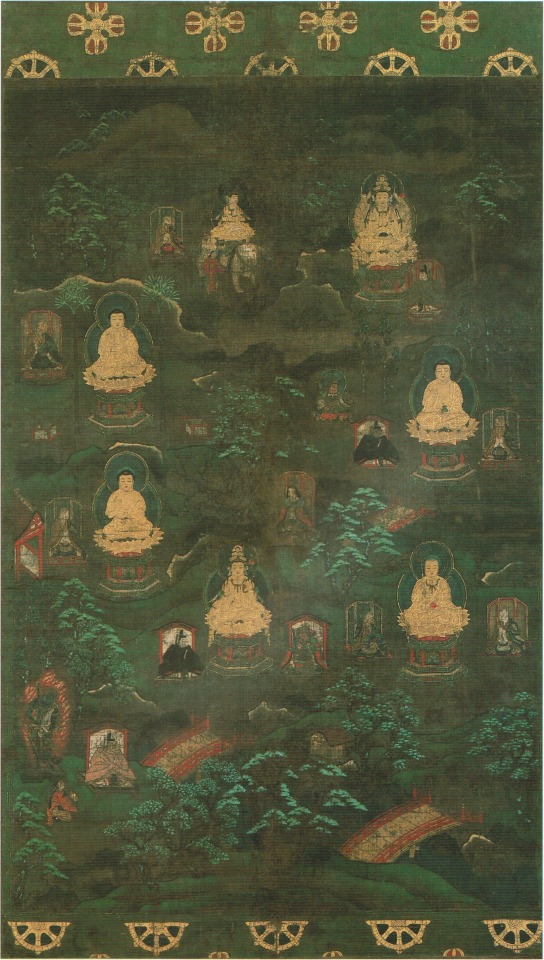
A hanging scroll of the Hie Sanno Mandara (日吉山王曼荼羅), a mandala depicting the local deities of Hie Jinja Shrine (日吉神社), i.e. present-day Hiyoshi Taisha Grand Shrine (日吉大社) in Ōtsu, Shiga Prefecture, as manifestations of the Buddhist divinities of Mount Hiei (比叡山) north of Kyoto, with the deities and divinities matched up throughout the landscape of the mountain
Color on silk dating to the Kamakura period (1185-1333) from the collection of Hyakusaiji Temple (百済寺) in Higashiōmi, Shiga Prefecture
Image from "Shintō: The Sacred Art of Ancient Japan" edited by Victor Harris, published by the British Museum Press. 2001, page 173
#japanese art#buddhist art#曼荼羅#mandala#滋賀県#shiga prefecture#東近江市#higashiomi#百済寺#hyakusaiji#天台宗#tendai#比叡山#hieizan#mount hiei#日吉神社#hie jinja#日吉大社#hiyoshi taisha#日吉山王曼荼羅#hie sanno mandara#crazyfoxarchives#arte budista#arte japonés
29 notes
·
View notes
Text
In “defense” of the Enryakuji invasion
This is the clash of two military and political powers that finally came to a head, not a one-sided oppression
When people cite the invasion of Enryakuji to accuse Nobunaga of all sorts of horrible things, it’s usually because they were under the impression that an unreasonably large number of people were killed, or that it was an oppressive massacre against a community that weren’t posing a threat.
It’s very unfortunate that it’s very rarely clearly explained to the general public that Enryakuji has armed forces. In a lot of ways it’s almost functioning like a samurai lord’s castle, inhabited by both warriors and civilians alike. They also had massive political power and influence. They’re not a quiet little temple whose inhabitants were peaceful or helpless.
The warrior monks of Enryakuji themselves have committed massacres and invasions. They do not accept other sects rivalling them, either out of genuine religious zealotry and considering the other sects “heretics”, or because they simply want to maintain their sect’s influence and authority in Kyoto. They were not politically neutral, nor were they pacifists.

(A Cultural History of Japanese Buddhism, page 178)
I emphasise the part where it says the Enryakuji warriors wrecked Kyoto so badly, it’s equal to -- or even worse than -- the destruction in Kyoto when the Onin War broke out. These monks are vicious and violent.
They were still meddling in politics and battle in Nobunaga’s time. During Nobunaga’s battles with the Azai and Asakura, these monks joined in the forces opposing Nobunaga. They took part in besieging Usayama Castle, which resulted in the death of one of Nobunaga’s brothers and some other senior vassals.
The killing of thousands of combatants and civilians alike regularly happens when any one lord invades another territory. There are no stipulations to spare civilians. If a lord decided to evacuate civilians first before the invasion, then it is a benevolent act. Otherwise, civilian casualties is just a fact of life in that time period.
In which case, how is Nobunaga’s invasion any different than, say, the occasion where Nobunaga invaded Mino and conquered the Saitou? That's rarely, if ever at all, cited that as an example of cruelty. That was just a battle.
There is no reason to be especially horrified about this Enryakuji incident above any other battle or invasion. This is nothing about this battle that more morally outrageous than what every samurai commander regularly do when engaging another samurai in battle.
I would grant that many people may think that any mass-death is automatically horrible, and perhaps no amount of reasoning and justification can make the Hieizan invasion and burning defensible. There is no denying that thousands of people were killed in Enryakuji. It’s fine if one were to still condemn this even after knowing the circumstances. Still, knowing and understanding the context matters.
The Hieizan situation only looks different than a regular castle invasion because Enryakuji has the facade and still does operate as a temple. There is something about religious sites that inherently invokes the image of sacredness after all, regardless of the faith, and the general public tends to view them differently than a regular fortress or castle.
It is true that there were contemporary Sengoku writers who severely criticised Nobunaga for his actions. However, for the Japanese at the time, Enryakuji is a holy site with immensely deep cultural and spiritual significance. Not just the temple, but the whole mountain itself. No matter how justified Nobunaga was, or even if nobody was killed, people were going to be up in arms about it simply for the fact that Hieizan was targeted.
Think of the time when the Notre Dame caught on fire. People from all over the world were horrified. Imagine how much worse would it be if, say, there’s a fire in the Vatican. That’s what it was like for the people there at the time.
On top of that, the chief priest of Enryakuji also happens to be the emperor’s brother. This invasion can be perceived to be disrespectful to the imperial court. It only worsens the uproar surrounding this situation, which then supposedly led to the dramatic letter where Nobunaga calls himself the Dairokuten Maou in a spiteful reply to Shingen’s letter rebuking him in the name of the chief priest.
An additional point in the “defense” is the numbers. For some reason there is a claim that 20 thousand were killed in the Enryakuji invasion. I have yet to find the exact source of this information. Wikipedia and other online articles cite Stephen Turnbull’s book, but I cannot find corroboration for this claim in the original historical documents.
Shinchoukouki said "many thousands” and did not specify a number, and Luis Frois recorded that he was told around 3000 were killed (about 1500 combatants, and 1500 civilians).
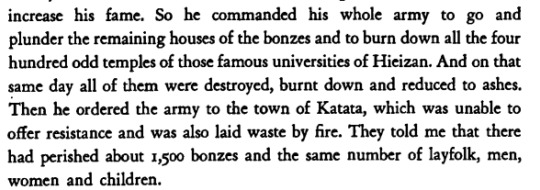
(They Came to Japan: An Anthology of European Reports on Japan, 1543-1640, page 99)
The claim of 20 thousand people killed also does not make sense as, supposedly, there weren’t even 10 thousand people inhabiting the Enryakuji complex in Hieizan at the time. How can the dead amount to more than double the actual number of inhabitants?
Lastly, there’s also reports from on-site research that claims that, as of 1980s, they weren’t able to find “proof” of massacre or mass-burning. They have yet to find the human remains of the dead, nor expansive traces of burning in the soil. The burning traces that was discovered were very minimal, compared to the narrative of “the whole mountain was up in flames”. On top of that, there were existing textual records describing many of the buildings were already dilapidated and abandoned as of 1570, and so even if they were burnt, there were no casualty or major losses.
However, this is a decades old report and I haven’t seen any certified updates on this yet. To be able to make a definitive claim, they would have to conduct a scan of the whole mountain, which is difficult to do.
#japanese history#enryakuji#enryaku-ji#hieizan#hiei-zan#mount hiei#mt hiei#oda nobunaga#sengoku#Sengoku period#Sengoku Era#Warring states#Warring States Era#Warring States Period#nobunaga oda#samurai
16 notes
·
View notes
Text
Day 12 Enryakuji
Finally, reached the top of the mountain and the temple!! Welcome to Enryakuji.


The temple grounds were a lot bigger than I initially expected, meaning I didn't really have time to give everything a proper look before having to go down again. I mostly regret not realizing there was some kind of collaboration going on with Violet Evergarden at the Garden museum until the moment I sat down in the cable car. Would have loved to see what that was about.
So, all I had a look at was the main area and one of the side areas. On my own though. When I arrived at the top, my husband announced he was going back down again. Apparently the cable car had done his fear of heights no good and the idea he had to ride it again stressed him out so much he wanted to get it over with as soon as possible.
So, I started exploring by myself.

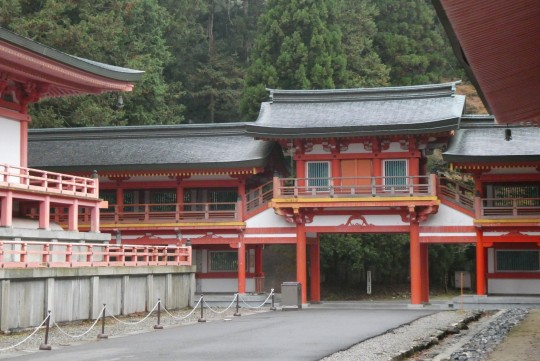

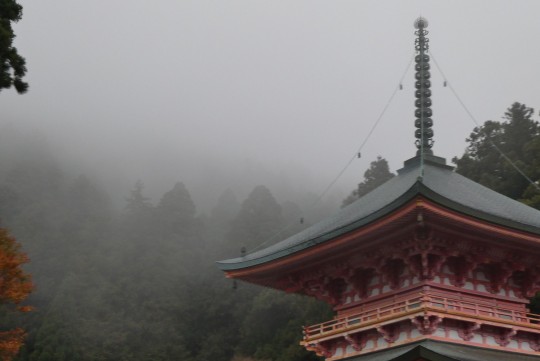
It was a bit unfortunate that the main building of the whole place was being renovated and barely visible to the eye. Seems it is going to take a few more years before they are done. But I suppose everything else was really pretty. Some parts were newer looking than others.
The oldest were probably located in one of the side parts I decided to visit, which was a roughly ten minutes walk away from the main area. Even though my husband was already asking me to hurry up and catch a cable car, since he was getting antsy about reaching Tokyo too late. (Any time before midnight is still on time! It's only 4PM! Let me explore!)
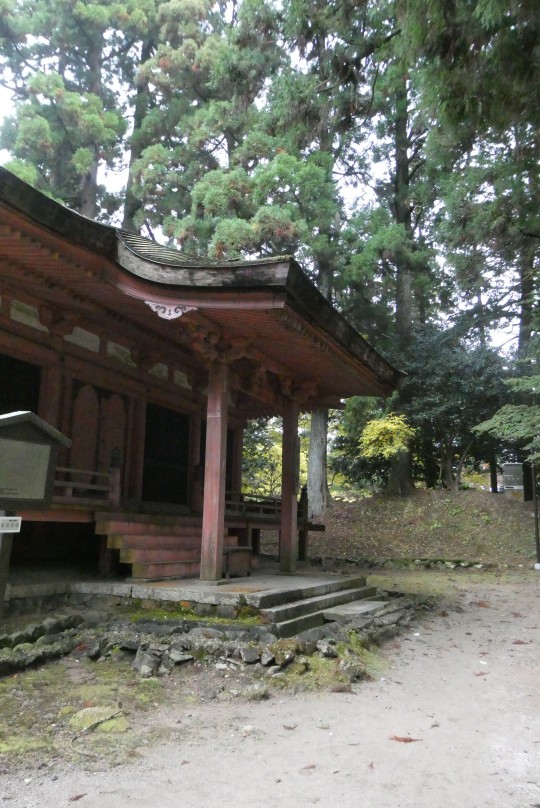
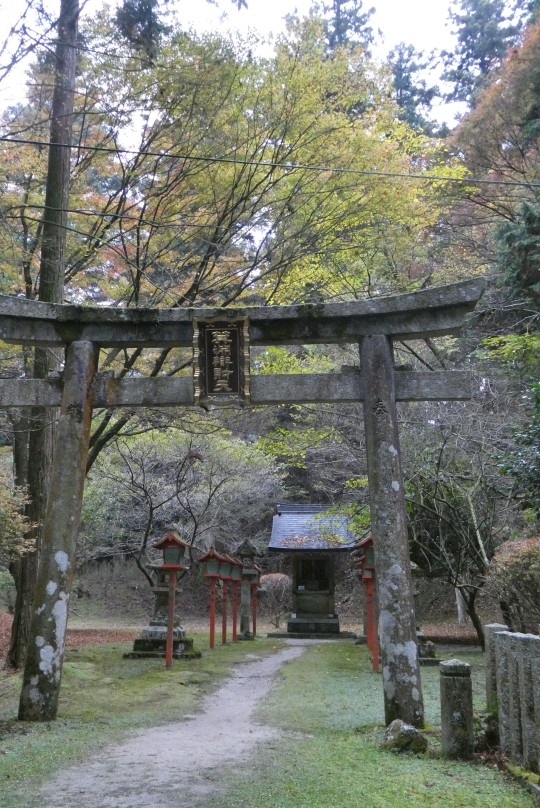
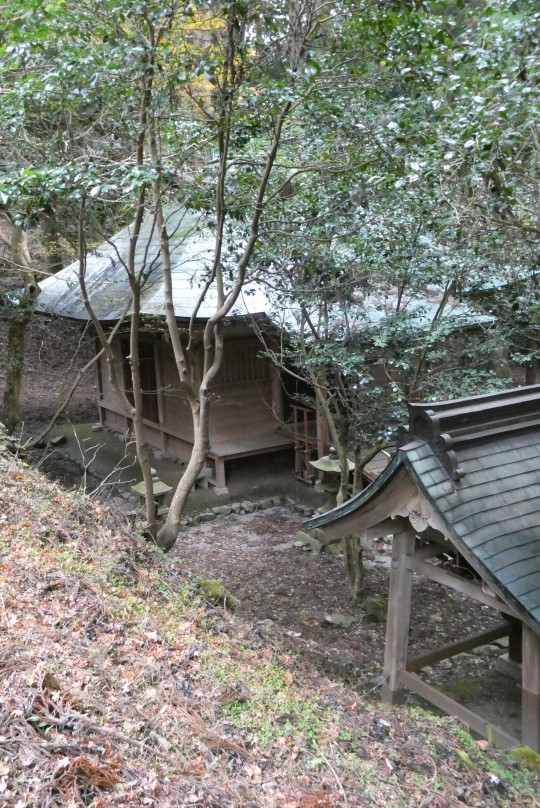
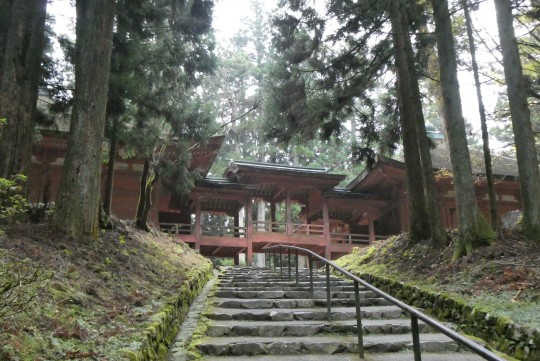
After a quick look around, and with my husband getting impatient, I ended up rushing back to catch the cable car that would leave half past four. In the end it was a bit further away than I initially expected, but I did make it in time and I got to sit down for the trip.
The ride was nice, apparently it's the longest cable car ride in Japan? But I suppose I do prefer walking up and down a mountain by myself. This time, that was unfortunately impossible.
By the time I reached the bottom, my husband was already at the JR station, telling me I had exactly 18 minutes to make it to the station, or we'd have to wait for the next train. Now guess how long it takes to walk to that station according to google? You guessed it, 18 minutes.
So, walking on full speed, I made it to the station with just 2 minutes to spare!
In Kyoto we grabbed some food at the convenience store, released our suitcases from the locker and sat down in a Shinkansen to Tokyo before eating out very lavish dinner consisting of nikuman and pizzaman.
And thus concluded my birthday...
Ah, no... In Tokyo we still had to find our hotel and my husband very carefully guided us to the wrong one. Like, in what world would a hotel chain need two hotels almost right next to each other? And give them almost exactly the same name? Who would think of that!?
Anyway, paying for a room with a view was definitely worth it! (Photos will follow later, I already reached my 10 photo allowance for this post...)
2 notes
·
View notes
Text
Kyoto 1 day Tour, Rabbit shrine Okazaki shrine with cute rabbit dolls, Hieizan enryakuji temple UNESCO WORLD HERITAGE SITE, Housenin temple, Jakkouin temple, enjoy autumn foliage fully!!
1 note
·
View note
Text



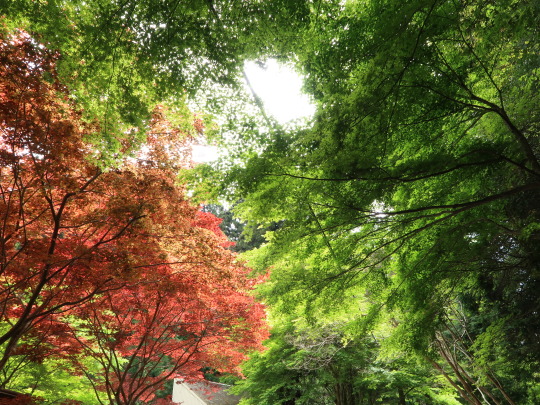


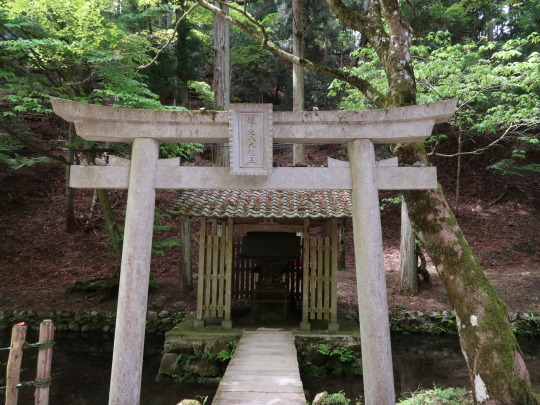

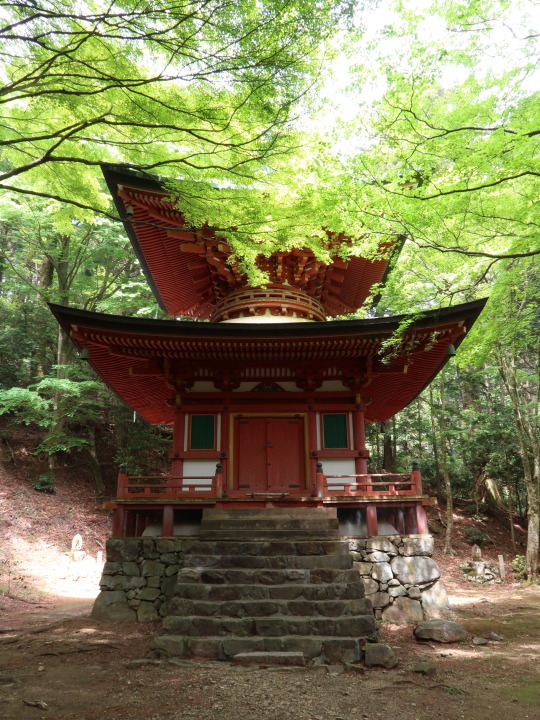
比叡山 横川エリア Hieizan Yokawa Area
滋賀県大津市 Otsu-shi, Shiga, Japan
2023/05
162 notes
·
View notes
Text
Charisma, Hitoriboushi (A Solitary Tribute Death) - Iori Motohashi English Lyrics Translation

TL Notes:
奉死 (houshi) is kind of a pun of 奉仕 (houshi) which is service. 奉死 (houshi) isn’t really a common combination, but 奉(hou) does have a meaning to “dedicate” which is what Iori is very well known for. He alone (独り, hitori) dedicates his body, and therefore eventually his death to whomever. 奉 in this case is an auxiliary that shows tribute to something. His death (死, shi) is a tribute to those he works himself to death for.
The “humble” pleasure in the sense of kairaku(快楽) is pleasure from freedom of earthly desires.
回峰行/kaihōgyō: thousand-day walk through the mountains from Hieizan to the old Imperial Palace in Kyoto (ascetic practice of the Tendai sect).
澪標/miotsukushi is a play on words (wow this is happening quite a lot here!) of 身を尽くし/mi wo tsukushi. A Heian-era classic Japanese poem (waka) by Prince Moriyoshi goes: “Miserable, now, it is all the same, channel-markers at Naniwa-- even if it costs my life, I will see you again!” (Translation by Dr Joshua Mostow) < That link goes more in-depth between the two.
I took a bit of liberty with 記憶の花/kioku no hana. Instead of saying “memory flower/flower of memory” I chose to put “forget-me-nots” as the flower most commonly associated with memory.
Also-- I just wanted to point out that the way they "officially" read "houshi" is "boushi" that's why the transliterated title is "Hitoriboushi" but he clearly says it as "houshi" as a reference to the word for service.
The voice calling me to humble pleasure consumed my brain With no way to shake it off, I return to you
Yielding myself to writhe in pleasant submission Controlling my own desires, aah, it drives me crazy
Chores, serving meals, massages Thousand-day pilgrimage, human sacrifice If anyone tries to steal those from me I’d sooner kill them
From the bone, all the way down to the marrow To the softly falling blossoms I would give up my life And it would come to an end… I would serve, serve, and serve-- until my dying breath This solitary tribute death
My favorite collar shackles me As a sign of my vow, if you would please let me be I cannot help but to be your slave For it is my purpose in life
If you wish for it (let me seek it) Tase me, blaze me, dunk me in an ice bath too My body (remembers it) This sinful love, passionately engraved
Please order me around! Come on! (I’ll bring you food) Do you need an organ donor? (Thank you) I’ll take on burdens from an alternate dimension right away Right now
From the bone, all the way down to the marrow To the softly falling blossoms I didn’t choose to be like this This is just how I live
Oneday… I will fall In the end, I’d like to be by your side Bloom, bloom, blooming bountifully I will become your “forget-me-nots”
And if I could be reborn again I would serve you once more Your esteemed orders Please give me more and more
A Solitary Tribute Death (google.com)
#charisma house#charisma#crsm#MatchaGyudon#translation#english translation#karisuma#hitoriboushi#iori motohashi#iori
24 notes
·
View notes
Text
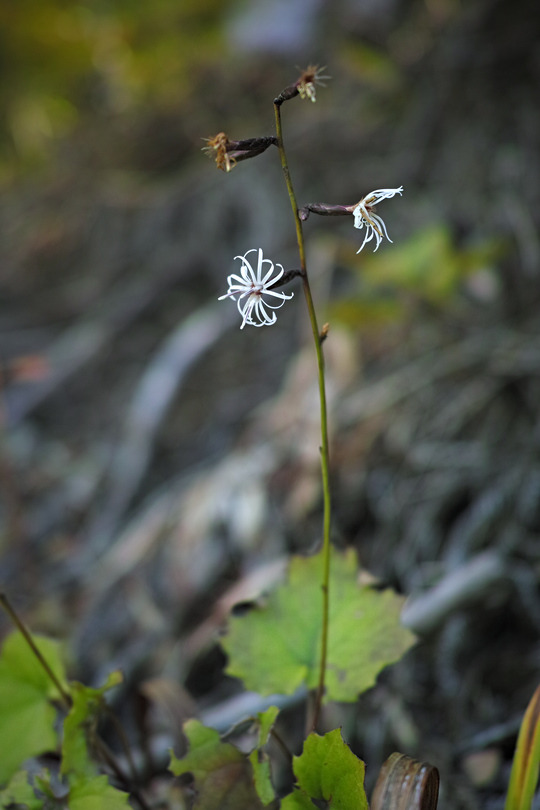
奥紅葉白熊[Okumomijihaguma] Ainsliaea acerifolia var. subapoda
奥[Oku] : Inner part, back
紅葉[Momiji] : Acer
白熊[Haguma] : White headdress made of yak tail hair
It is so named because grows in the inner(north) part land than Momijihaguma(var. acerifolia,) which has leaves similar to those of Momiji and produces white flowers resemble Haguma. The notches in its leaf are more shallow.
Another name is 叡山白熊[Eizanhaguma]. 叡山 means 比叡山[Hieizan](Mount Hiei.)
13 notes
·
View notes
Text
Inindo: way of the Ninja Mt. Hieizan Hiori Wakakuwa Koei 1993
0 notes
Text
youtube
The Japan No One Knows. Ancient Shrines with a Thousand Years of History
Tokyo is amazing in that shrines with such a long history stand casually. It was founded by the Great Monk Genzo (Jiei), the founder of Hieizan and the originator of the Kakudaishi bad luck talisman. Genso Daishi is a Buddhist monk. He was said to have had spiritual power since childhood and was called a spiritual child, He was said to have had spiritual power since he was a child, and he created a scary-looking talisman depicting an evil spirit or a god of pestilence called Kakudaishi to cure an epidemic disease. He saved many people from illnesses.
When you enter the shrine grounds, you will be amazed at the many stone monuments that show the history that has been built up over the years. It was a sanctuary that made me realize that you have to actually visit a shrine to understand it.
0 notes
Photo







Hieizan Enryakuji
#hieizan enryakuji#hieizan#enryakuji#shiga japan#summer vacation#temple#shrine#yamamoto#hair salon#kyoto japan#life/life adore
7 notes
·
View notes
Photo

The central chambers of the Taizōkai Mandara (胎蔵界曼荼羅), the Matrix World Mandala depicting hosts of buddhas, bodhisattvas, wrathful wisdom kings, and assorted other divinities & supernatural beings radiating from the cosmic buddha Dainichi Nyorai (大日如来) in the center, here all represented by their Sanskrit seed syllables in Siddhaṃ script
Color on silk dating to the 14th century, from the collection of Enryakuji Temple (延暦寺) on Mount Hiei (比叡山) north of Kyoto
#japanese art#buddhist art#曼荼羅#mandala#胎蔵界曼荼羅#taizokai mandala#taizokai#京都#kyoto#滋賀県#shiga prefecture#大津市#otsu#比叡山#hieizan#mount hiei#延暦寺#enryakuji#種子#shuji#seed syllable#梵字#bonji#天台宗#tendai
73 notes
·
View notes
Text
Dairokuten Maō in Cartas
Thank you to the helpful people who forwarded links to the digitized version of Cartas, I was able to identify some of the stories I found in Japanese articles about Luis Frois letters. The most important one being the supposed story of how Nobunaga called himself "Dairokuten Maō".
Letter from Luis Frois in the capital, addressed to Francisco Cabral, 20 April 1573:


There in the text you can see that he recorded of Shingen having called himself "Tendai no Zasu Shamon Shingen" in a letter, and to which Nobunaga responded with "Dairokuten no Maō Nobunaga".
This is a kind of unusual transcription. Most people today would write the epithets as "Dairokuten Maō" and "Tendai Zasu" respectively, without the "no" particle in the middle. I'm assuming this was just the way things are rendered in medieval Japan, which would have been different from modern Japanese.
Even if Frois had gotten incorrect information, I don't believe he would be making this up. He possibly had heard of it from rumours in town.
There's also a brief comment about how Nobunaga called himself the "living god (kami) and Buddha".
*) By the way, if anyone reading this can read Portuguese, can you please help confirm what is "paos"? The Japanese translation of "aspedras & paos" is "stone and trees".
Also, there was something strange when I was trying to check this out. The Japanese article I got said that this Dairokuten Maō story is in a letter from Luis Frois addressed to Antonio de Quadros in 1573. The problem is, in Cartas none of Frois's 1573 letters are addressed to Quadros. Frois's letters to Quadros were from 1571. It had some discussion about Hieizan, but not Shingen.
Eventually I did find the above quote among the 1573 letters, it's just that the letter is actually addressed to Francisco Cabral, not Quadros. I'm not sure if there's some kind of error in the Japanese translation, or the article writer is the one who misquoted the text.
#oda nobunaga#takeda shingen#japanese history#dairokuten maou#dairokuten maoh#sengoku period#sengoku era#sengoku#warring states#samurai#warring states era#warring states period#demon king of the sixth heaven#demon king of sixth heaven#luis frois#cartas#european account#resource
14 notes
·
View notes
Text
Day 12 Omi Shrine
The day started early, because we had to leave the apartment at 10:00. In the end, we probably left just after nine, making our way to Kyoto to drop our luggage, before heading over to Otsu (Lake Biwa).
Last Monday, we found loads of coin lockers available at Kyoto station, so what could go wrong?... holy cow, how can all those coin lockers be filled this early in the morning! We walked all around the station, but could not find a single available locker to store our suitcases.
In the end, we decided to just drag our suitcases to Otsu station and pray to find an empty locker there. Then, as our train slid out of Kyoto station, we noticed an abundance of empty coin lockers on platform zero! Crap!!
To our dismay, Otsu had no coin lockers available. The very few it had were already taken, so... We boarded a train back to Kyoto station. (Haha... Eh...) There we dropped our luggage in one of the empty lockers on platform zero and went on our way again. I suppose the ones on the platform are so empty, since they really are only useful to those who will leave via Kyoto station again on the same day (and before 20:00).
All in all we lost quite a bit of time with this little dance. So, adjustments to the plans had been made. My leisure walk by the lakeside was cut, Miidera crossed of the list and eventually I redirected our route to Otsukyo station, from where we walked toward Omi Shrine.

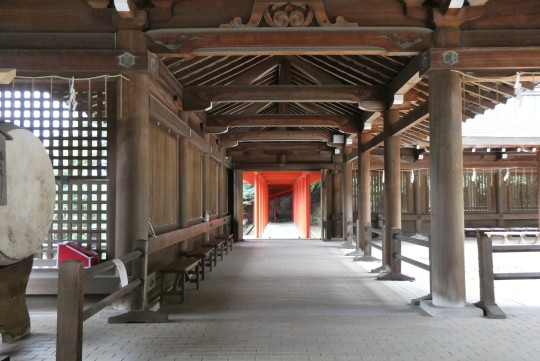
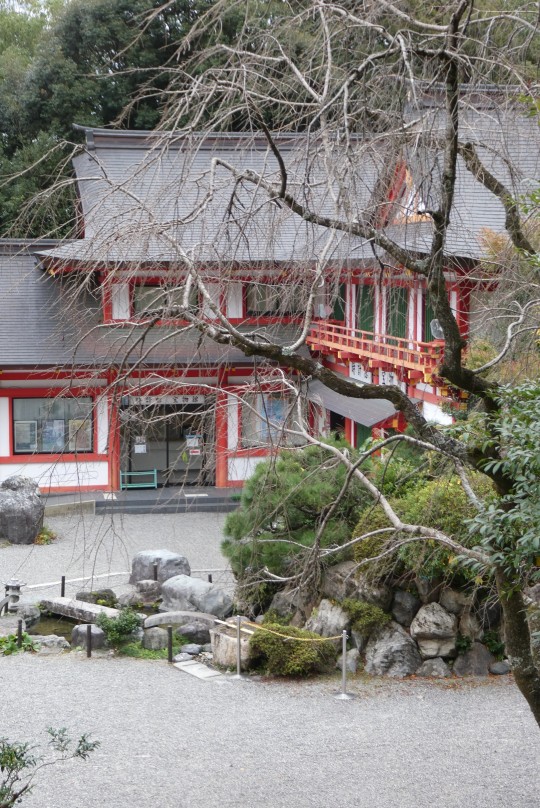
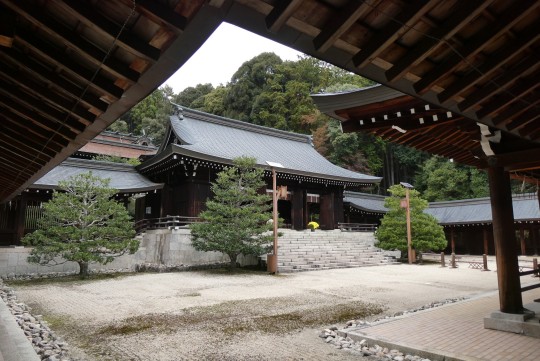
It was quite pretty, but overrun by parents and children for their shichigosan ceremonies, so... It felt a bit odd to be looking around. As a result our visit was rather brief.
From there we walked over to the nearest station, Minami-Shiga. And grabbed the train to Sakamoto-Hieizanguchi.
Despite the delay in my plans , I very stubbornly held onto my plans to actually climb the mountain, up to Enryakuji, instead of riding the cable car (as my husband would.)

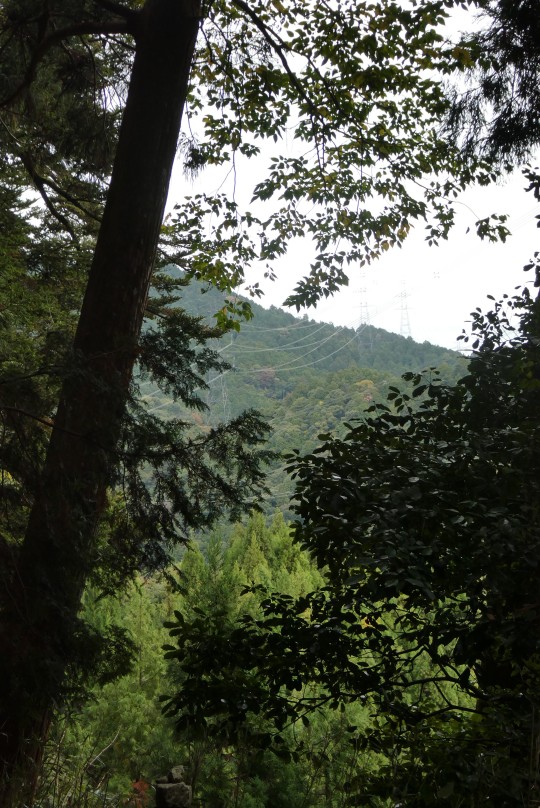
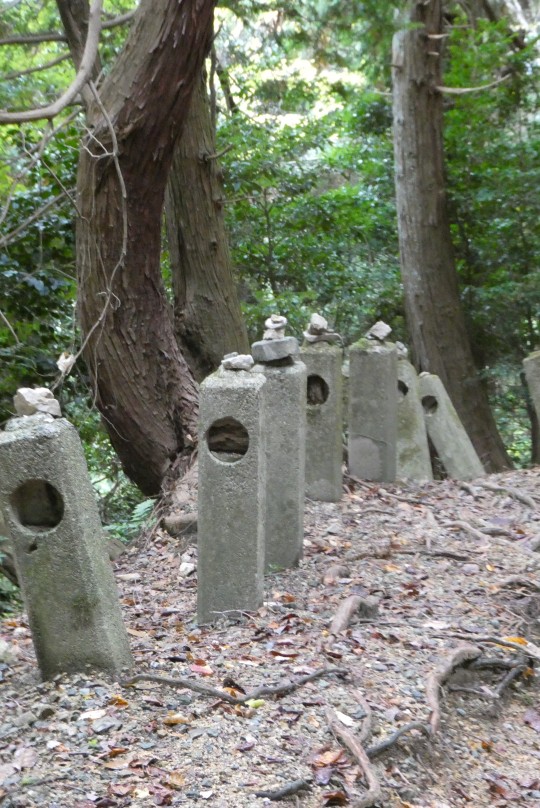

Along the way I certainly questioned myself a few times why the plan had been to climb the mountain via the Honzaka trail, rather than descending. Which would have arguably been easier... Just to remind myself I chose this order, because otherwise I might have ended up on a dark trail due to sunset coming earlier than expected.
Anyway, the trail was pretty, but really pushed me to my limits again. Or maybe I'm just trying to go to quickly and that's what's breaking me up. Official maps say the trail should take roughly 2 hours, but I reached the top after a single hour... I just feel that if I went any slower, I wouldn't be making any progress... Of the weather had been nicer, I might have taken a few more breaks though... It is a pretty rough trail though.
0 notes
Photo







Hieizan Enryaku-ji : 比叡山延暦寺
220 notes
·
View notes
Text
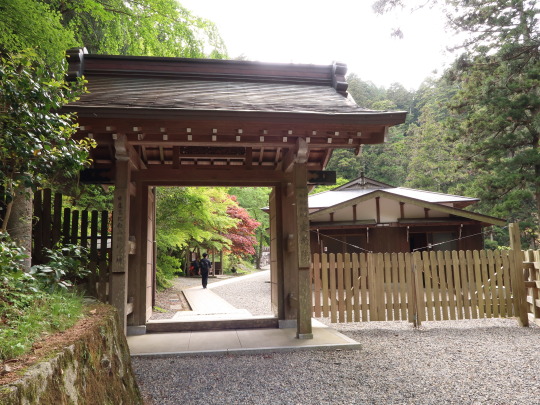
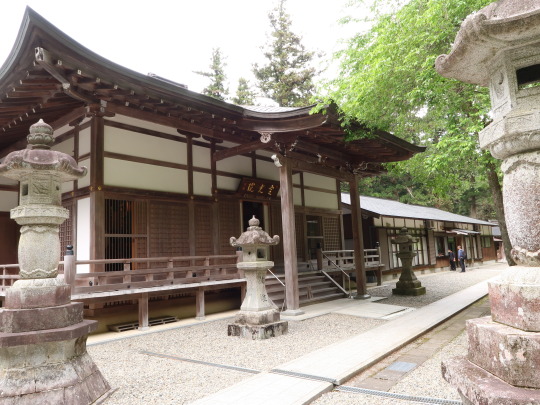



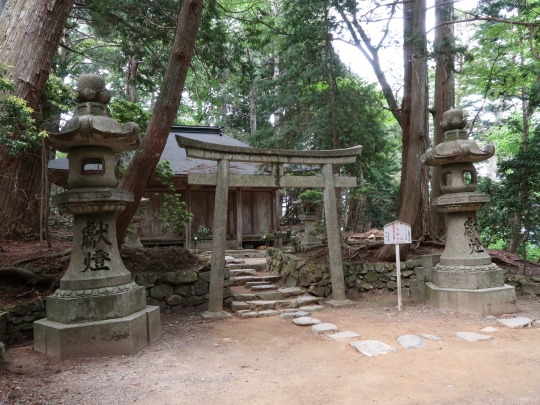


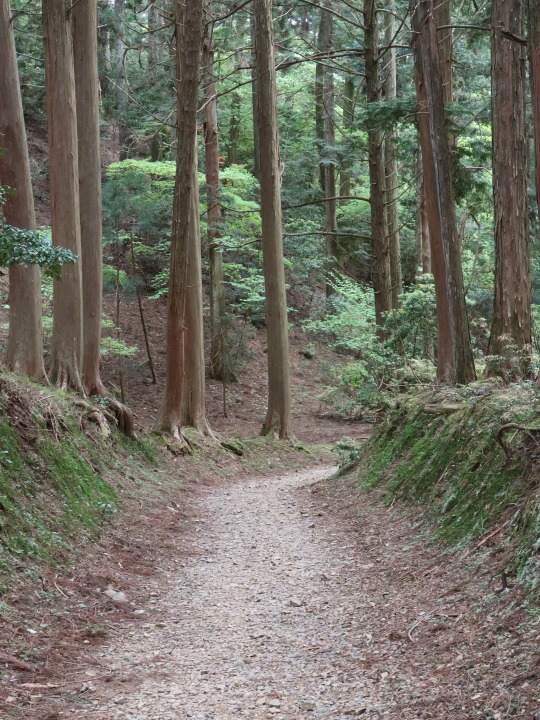
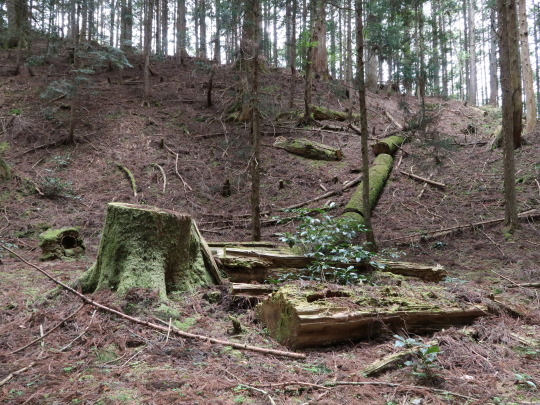

比叡山 横川エリア Hieizan Yokawa Area
滋賀県大津市 Otsu-shi, Shiga, Japan
2023/05
140 notes
·
View notes
